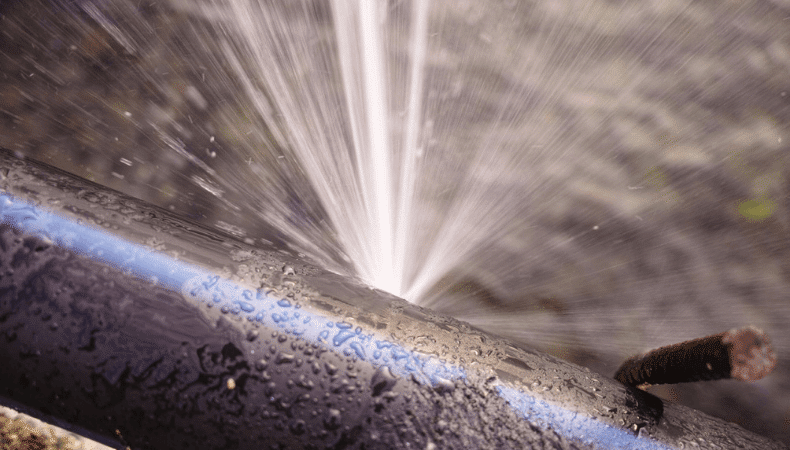Burst Water Pipe Bathroom Temporary Repair

One of the most common plumbing emergencies is a burst water pipe. Are you looking for a quick fix? Here’s what you can do to make a temporary repair to quickly solve the problem if this happens to your pipes in your bathroom. Whether it’s a gushing geyser from an accidental cut in a copper pipe when doing bathroom renovations or a tiny pinhole leak in an old cast-iron pipe, it needs to be fixed right away before it causes unnecessary water damage.
The very first thing you should do is turn off the water to your pipes so that you can gauge the problem and hopefully make the necessary repair. Sometimes you might get lucky and all you have to do is tighten a fitting. The optimal solution would be to replace the damaged section of the pipe but if that can’t be done right away because you don’t have the replacement pipe then a temporary solution is to patch the pipe until you can get what you need.
Read more: How to Remove a Toilet
The tools and materials you require are quite straight forward and include a metal file, screwdriver, banded clamps, and rubber pipe insulation. A word of caution here, a temporary patch is exactly like what the name says “temporary”, you may be able to get away with using it for a few days but rather than risk the patch leaking or bursting you should replace the damaged plumbing pipe as quickly as you can. Also because water going through your pipes is under pressure, the patch should be checked upon regularly to make sure it is still holding.
To begin, the first thing that you need to do is use a metal file to smooth and flatten out any sharp edges around the cracked opening in the pipe. Next take some thick rubber pipe insulation or if you don’t have any, cut off a section of a garden hose, slit it length wise and slip it over the damaged pipe.
Read more: Drywall Renovation Problems to Avoid
To finish, securely attach banded clamps over the rubber insulation at each side of the split in the pipe and tighten the clamp screws of the banded clamps. The whole apparatus now acts as a sort of protective sleeve. Try to get the clamps as close to the edge of the tear in your pipe as possible so that you have a nice tight seal.
Emergencies do happen. As noted this can sometimes happen with unexpected plumbing problems. Make sure you are prepared by having some extra pipe insulation and banded clamps handy just in case. As in most preventive maintenance measures, its better to be safe than sorry, so plan ahead.
Read more: How to Install Mosaic Tile in Your Bathroom
